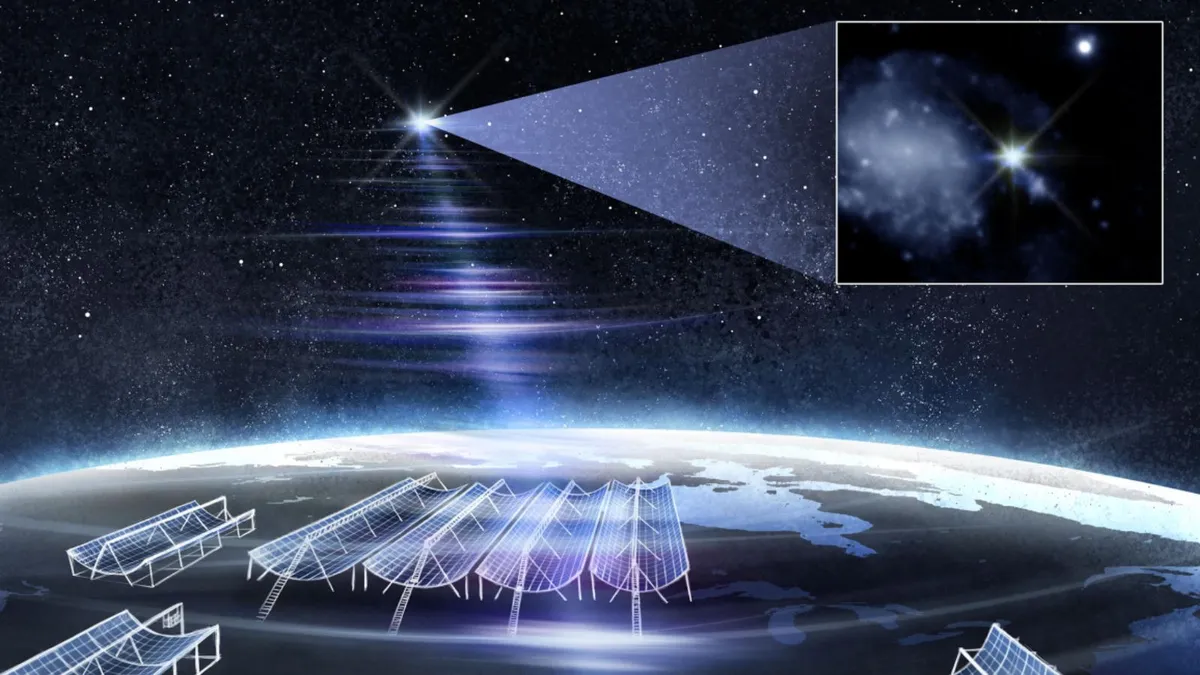
A groundbreaking discovery in the field of astronomy has emerged as researchers have identified what may be the brightest flash of radio waves ever recorded. This astonishing finding involves a fast radio burst (FRB), which has been traced back to its origin. This achievement could fundamentally alter our understanding of these enigmatic and swift bursts of radiation, which can emit an energy output equivalent to that of the sun in merely a few milliseconds.
Fast radio bursts, first detected in 2007, have posed significant challenges for astronomers seeking to explain their origins. The fleeting nature of these bursts, coupled with the fact that only a small subset of them exhibit repeating behavior, complicates follow-up research. While numerous hypotheses have been proposed, the prevailing theories attribute these bursts to extreme remnants of dead stars, specifically neutron stars with extraordinarily strong magnetic fields, commonly referred to as magnetars.
The newly discovered FRB has been officially designated as FRB 20250316A and affectionately nicknamed RBFLOAT, which stands for Radio Brightest FLash Of All Time. This exceptionally luminous FRB was initially detected in March 2025 by the Canadian Hydrogen Intensity Mapping Experiment (CHIME), renowned for its significant contributions to the discovery of new FRBs. Remarkably, this marks the first occasion where the CHIME/FRB radio telescope has independently tracked an FRB back to its source.
The source of RBFLOAT is located within a region just 45 light-years across, which is notably smaller than the average star cluster. This region resides in the spiral arm at the edge of NGC 4141, a galaxy situated approximately 130 million light-years away from Earth. To put this achievement into perspective, the research team likens it to detecting a quarter from a distance of 62 miles away. This pivotal discovery allows astronomers not only to detect these mysterious flashes but also to pinpoint their exact origins.
The successful localization of FRB 20250316A can be attributed to the enhanced spatial resolution provided by CHIME's newly constructed outrigger telescopes, which are strategically placed across North America, from British Columbia to California. According to Amanda Cook, the team leader and a researcher at McGill University, "With the CHIME Outriggers, we are finally catching these fleeting cosmic signals in the act, narrowing down their locations not only to individual galaxies but even to specific stellar environments."
The precision of this localization, measured in tens of milliarcseconds, allowed the team to identify the host galaxy, NGC 4141, and link the burst to a faint infrared signal detected by the James Webb Space Telescope (JWST). This marks a historic moment, as it is the first instance where astronomers have successfully traced an FRB back to its source quickly enough to utilize the powerful infrared capabilities of the JWST. Team member Peter Blanchard, a research associate at the Harvard College Observatory, expressed excitement at the discovery, stating, "We see a faint source of infrared light very close to where the radio burst occurred." This object has been designated NIR-1 and is believed to be a red giant star or a middle-aged massive star.
Red giants are among the final evolutionary stages of stars with masses similar to that of the sun, occurring after they have depleted their hydrogen fuel and experienced core collapse. However, it is crucial to note that NIR-1 is unlikely to be the direct cause of RBFLOAT. As Blanchard and his colleagues theorize, NIR-1 may possess a more extreme companion, likely a neutron star, which could be responsible for the bright FRB. The immense gravitational pull of this neutron star might be stripping material away from NIR-1, a process that could have catalyzed the FRB's release.
Whether NIR-1 is indeed associated with the FRB remains uncertain. However, the research team has gleaned valuable insights into the burst's origin. If the connection to the double star system is disproven, it could suggest that an isolated magnetar is responsible for the FRB. If the infrared source begins to diminish over time, it could indicate that it is, in fact, reflected light caused by flaring from the object that produced RBFLOAT, potentially a magnetar.
Given the exceptional brightness of RBFLOAT and its relative proximity to Earth—compared to many FRBs that originate from billions of light-years away—combined with the JWST's ability to capture detailed images of the region of interest, this discovery may be pivotal in unraveling the mysteries surrounding these intriguing bursts of radiation. As Berger concluded, "We have taken the first step on a new path to solving the mystery of FRBs using the sharp imaging of JWST to zoom in on the precise locations from which FRBs are emanating." The scientific community now faces the challenge of preparing for the next FRB, with the hope that the JWST will continue to provide valuable insights into these cosmic phenomena.